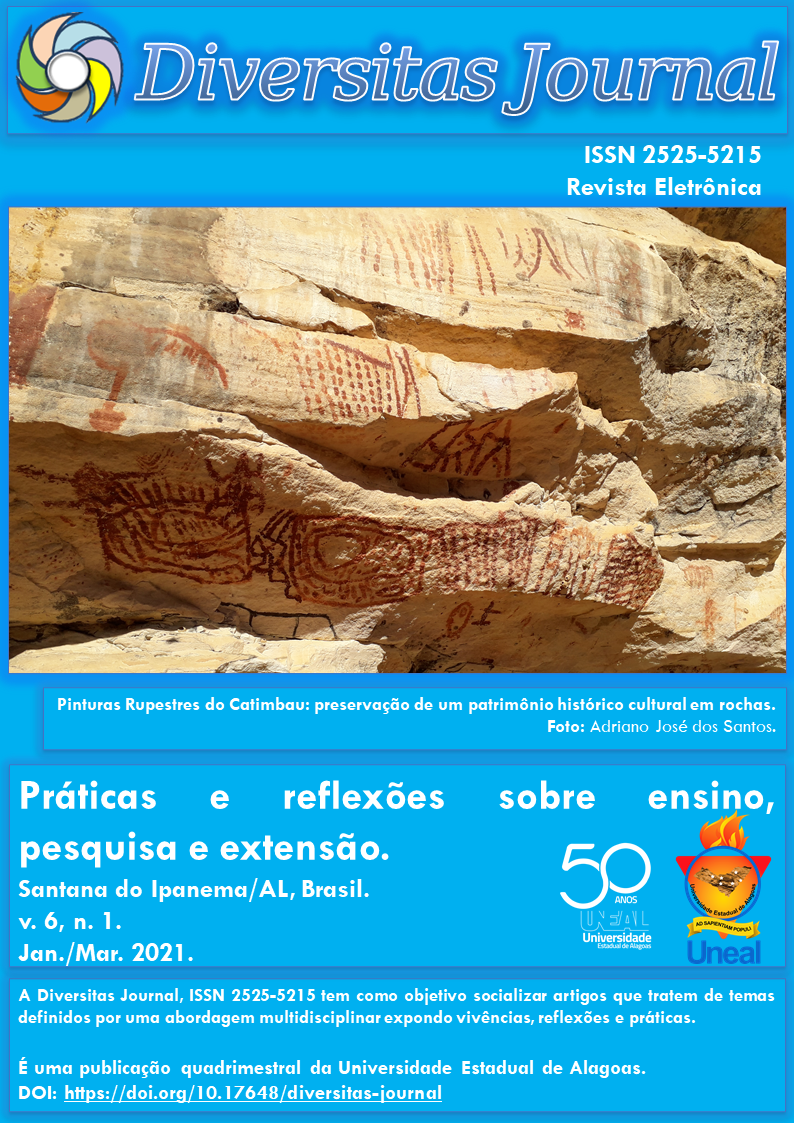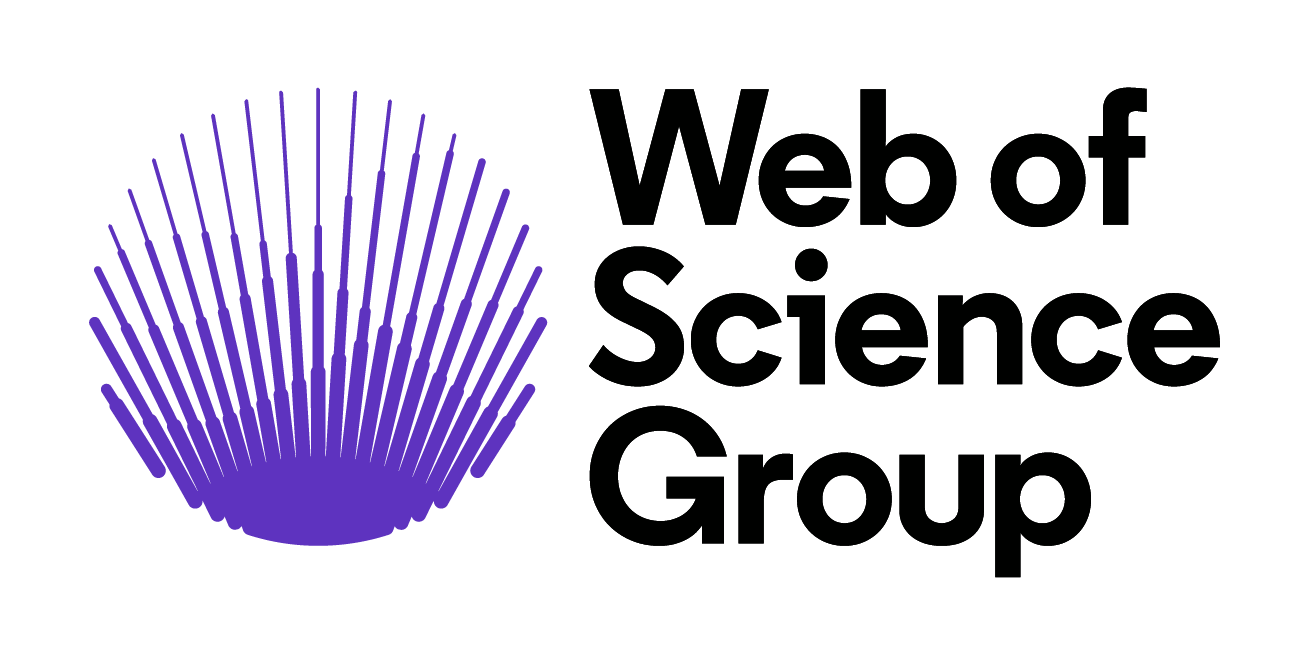Análise Epidemiológica das Arboviroses no Município de Arapiraca - AL, no período de 2015 a 2018
DOI:
https://doi.org/10.17648/diversitas-journal-v6i1-1373Palavras-chave:
Epidemiologia, Vetores, Saúde PúblicaResumo
A presença dos arbovírus no Brasil têm se tornado um crescente problema de saúde pública e a preocupação com seus impactos na população não são recentes. Atualmente as três arboviroses de maior importância para a saúde pública são a dengue, Chikungunya e Zika vírus, sendo estas capazes de serem transmitidas pelos mesmos insetos vetores, o Aedes aegypti e o Aedes albopictus. O Nordeste é a região brasileira com o maior número de casos confirmados, portanto, o presente estudo objetivou analisar a situação epidemiológica das arboviroses (Dengue, Chikungunya e Zika), no município de Arapiraca-AL, no período de 2015 a 2018. Trata-se de um estudo transversal de abordagem descritiva e retrospectiva, com dados secundários coletados através da base de dados do Sistema de Informação de Agravo de Notificação (SINAN). No período estudado foram registrados um total de 17.610 casos de arboviroses, destacando a dengue com 16.328 casos. Os adultos foram os mais acometidos, assim como o sexo feminino (55,3%). Diante dos dados mostrados percebe-se que a Dengue continua sendo um grave problema de Saúde Pública, principalmente, devido a presença do vetor principal somada à co-circulação de outros arbovírus como Chikungunya e Zika, aumentando a dificuldade de diagnóstico e tratamento precoce adequado.
Métricas
Referências
AZEVEDO, R. S. S.; OLIVEIRA, C. S.; VASCONCELOS, P. F. C. Chikungunya risk for Brazil. Rev. Saúde Pública,2015.
BOHM, A.W.; COSTA, C. S.; NEVES, R. G. et al. Tendência da incidência de dengue no Brasil, 2002-2012 Epidemiol. Serv. Saude, Brasília, 2016.
BRASIL. Ministério da Saúde. Secretaria de Vigilância em Saúde. Monitoramento dos casos de dengue, febre de chikungunya e febre pelo vírus Zika. Boletim Epidemiológico, v. 46, n. 36, 20
BRASIL. Ministério da Saúde. Secretaria de Vigilância em Saúde. Monitoramento dos casos de dengue, febre de chikungunya e febre pelo vírus Zika até a Semana Epidemiológica 49. BolEpidemiol [Internet]. 2016a.
BRASIL. Ministério da Saúde. Secretaria de Vigilância em Saúde. Departamento de Vigilância das Doenças Transmissíveis. Programa nacional de controle da dengue. Nota informativa SVS/MS: procedimentos a serem adotados para a vigilância da Febre do vírus Zika no Brasil [Internet]. Brasília: Ministério da Saúde; 2016b.
BRASIL. Ministério da Saúde. Secretaria de Vigilância em Saúde. Coordenação-Geral do Desenvolvimento da Epidemiologia em Serviços. Guia de vigilância em saúde: volume único [Internet]. 2. ed. Brasília: Ministério da Saúde; 2017.
BRASIL. Secretaria de Vigilância em Saúde Boletim Epidemiológico, 2019.
CAMPOS, G. S.; BANDEIRA, A. C.; SARDI, S. I. Zika virus outbreak, Bahia, Brazil. Emerg Infect Dis, 2015.
CAMPOS, J. M.; OLIVEIRA, D. M.; FREITAS, E. J. A. NETO, A. C. Arboviroses de importânciaepidemiológica no Brasil. Revista de Ciências da Saúde Básica e Aplicada. 2018, 1(1): 36-48.
CAVALCANTE, W. D.; VILAR, M.S.A.; VILAR, D.A.; SOARES, C.S. Características epidemiológicas da dengue na comunidade São Januário II na cidadede Campina Grande -afrom:<http://www.rbfarma.org.br/files/rbf-2011-92-4-7-287-294.pdf>. Acesso em: 10 nov. 2019.
DONALISIO, M. R.; FREITAS, A. R. R.; ZUBEN, A. P. B. V. Arbovirusesemerging in Brazil: challenges for clinicandimplicationsfor publichealth. Rev. Saúde Pública, 2017.
FIGUEIREDO, L. T. M. The Brazilian flaviviruses. Microbes Infect. 2000 Nov;2(13):1643-9.
FIOCRUZ, Fundação Oswaldo Cruz. A dengue em números. 2008. Disponível em:<http://www.fiocruz.br/ioc/cgi/cgilua.exe/sys/start.htm?infoid=573&sid=32>. Acesso em:jul. 2019.
FULLER, T. L. et al. Behaviorial, climatic, and environmental risk factors for Zika andChikungunya vírus infectionsin Rio de Janeiro, Brazil, 2015-16. PLOS ONE, v. 12, n. 11:e0188002, 2017.
GARCIA, L. P. Epidemia do vírus zika e microcefalia no Brasil: emergência, evolução eenfrentamento. Texto para discussão / Instituto de Pesquisa Econômica Aplicada –IPEA2018.
HELLER, L. Melhoramento dos serviços de água e saneamento é a resposta ao Zika vírus. 2016. Disponível em https://www.abrasco.org.br/site/noticias/ecologia-e-meio-ambiente/zika_saneamento_leo_heller/16639/ (Acesso em fev. 2020).
HENRIQUES, M. S. Comunicação e mobilização social na prática de polícia comunitária.Belo Horizonte: Autêntica, 2010.
IBGE, 2018. Disponível em https://cidades.ibge. gov.br/brasil/al/arapiraca/panorama. Acesso em outubro/2019.
IBGE. Instituto Brasileiro de Geografia e Estatística (2019). Disponível em: <https://www.ibge.gov.br/cidades-e-estados/al/arapiraca.html>. Acesso em 27 de out de 2019.
LOPES, N.; NOZAWA, C.; LINHARES, R. E. C. Características gerais e epidemiologia dos arbovírus emergentes no Brasil. Revista Pan-AmazSaude, 2014.
MALTA, J. M. A. S.; VARGAS, A.; LEITE, P. L. et al. Síndrome de Guillain-Barré e outras manifestações neurológicas possivelmente relacionadas à infecção pelo vírus Zika em municípios da Bahia, 2015. Epidemiol. Serv. Saúde, Brasília, 2017.
MISHRA, N.; CACIULA, A.; PRICE, A. et al. Diagnosis of Zika Virus Infection by Peptide Array and Enzyme-Linked Immunosorbent Assay. mBio, 2018.
NÓBREGA, M.E.B.; ARAÚJO, E. L. L.; WADA, M. Y. et al. Surto de síndrome de Guillain-Barré possivelmente relacionado à infecção prévia pelo vírus Zika, Região Metropolitanado Recife, Pernambuco, Brasil, 2015. Epidemiol. Serv. Saude, Brasília, 2018.
OLIVEIRA, R.M.A.; ARAÚJO, F.M.C.; CAVALCANTI, L.P.G. Aspectos entomológicos e epidemiológicos das epidemias de dengue em Fortaleza, Ceará, 2001-2012. Epidemiologia e Serviços de Saúde, v. 27, n.1, e201704414, 2018.
ORGANIZAÇÃO PAN-AMERICANA DA SAÚDE -OPAS. Organização Mundial da Saúde. Chikungunya [Internet]. Washignton (D.C.): Organização Pan-Americana da Saúde; 2017.
PORTO, L. W.; TERTO, T. F.; SOARES, L. C. et al., Cenário epidemiológico das arboviroses no Piauí. Revista Eletrônica Acervo Saúde / Electronic Journal Collection Health.Vol.11(14) | e1054, 2019.
PETERSEN, E; WILSON, ME; TOUCH, S; MCCLOSKEY, B; MWABA, P; BATES, M; DAR, O; MATTES, F; KIDD, M; IPPOLITO, G; AZHAR, EI; ZUMLA, A. Rapid Spread of Zika Virus in The Americas -Implications for Public Health Preparedness for Mass Gatherings at the 2016 Brazil Olympic Games. International Journal of Infectious Diseases.Vol. 44. p. 11-15. March 2016.
QUEIROZ, J. T. M.; SILVA, P. N.; HELLER, L. Novos pressupostos para o saneamento no controle de arboviroses no Brasil. Cad. Saúde Pública,2020;
RIBEIRO, T. M.; RIOS, R. L.; SANTOS, C. M.; PALERMO, T. A. C. Perfil epidemiológico dos casos de arboviroses do munícipio de Campos dos Goytacazes/RJ. Revista PerspectivasOnline: Biológicas & Saúde.Dezembro de 2019, Vol. 9, nº 31, p.22-33.
SECRETARIA DE ESTADO DE ALAGOAS. Superintendência de Vigilância em Saúde. Saúde Alagoas: Análise da Situação de Saúde 2017. Alagoas, 2017. Disponível: <http://www.saude.al.gov.br/wp-content/uploads/2018/06/ASS-2017-ALAGOAS-FINAL.pdf>. Acesso em jun. 2019.
SECRETARIA MUNICIPAL DE SAÚDE –SMS.Superintendência de Planejamento.Plano Municipal de Saúde (2014 -2017).Arapiraca/AL, 2014.
TEIXEIRA, M.G.; BARRETO, M. L.; GUERRA, Z. Epidemiologia e medidas de prevenção do Dengue. Inf. Epidemiol, 1999.
VOGELS, C. B. F.; RUCEKERT, C.; CAVANY, S. M. et al. Arboviruscoinfectionandco-transmission: A neglectedpublichealthconcern? PLOS Biology, 2019.
World Health Organization. Dengue control[Internet].Geneva: World HealthOrganization; 2016. Availablefrom: http://www.who.int/entity/denguecontrol/en/index.html.
Downloads
Publicado
Como Citar
Edição
Seção
Licença
Copyright (c) 2021 Bruna Lívia Barbosa dos Santos Almeida, Fernanda Stefanny Lima Sobrinho, Mayara Camila Santos Silva, Claudimary Bispo dos Santos

Este trabalho está licenciado sob uma licença Creative Commons Attribution 4.0 International License.
O periodico Diversitas Journal expressa que os artigos são de unica responsabilidade dos Autores, conhecedores da legislação Brasileira e internacional. Os artigos são revisados pelos pares e devem ter o cuidado de avisar da possível incidencia de plagiarismo. Contudo o plagio é uma ação incontestavel dos autores. A Diversitas Journal não publicará artigos com indicios de Plagiarismos. Artigos com plagios serão tratados em conformidade com os procedimentos de plagiarismo COPE.
A violação dos direitos autorais constitui crime, previsto no artigo 184, do Código Penal Brasileiro:
“Art. 184 Violar direitos de autor e os que lhe são conexos: Pena – detenção, de 3 (três) meses a 1 (um) ano, ou multa. § 1o Se a violação consistir em reprodução total ou parcial, com intuito de lucro direto ou indireto, por qualquer meio ou processo, de obra intelectual, interpretação, execução ou fonograma, sem autorização expressa do autor, do artista intérprete ou executante, do produtor, conforme o caso, ou de quem os represente: Pena – reclusão, de 2 (dois) a 4 (quatro) anos, e multa.”


















